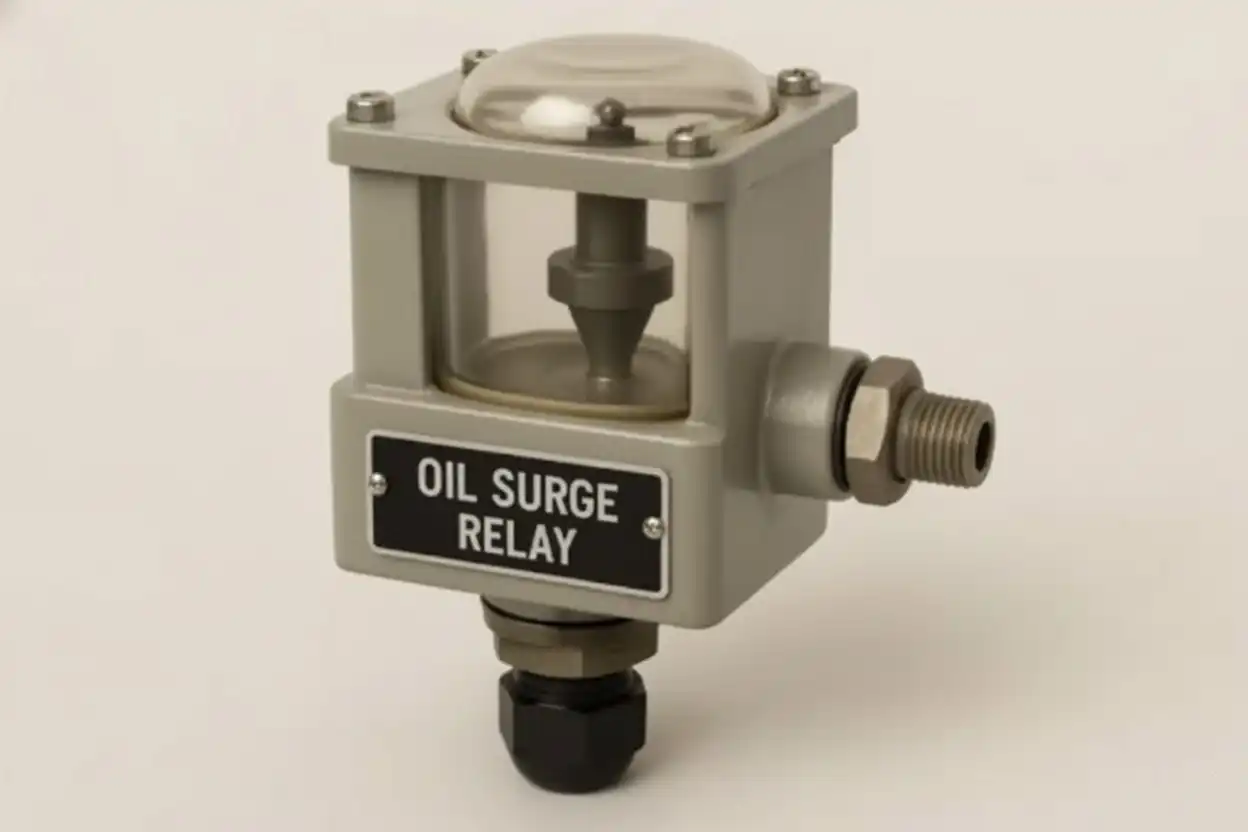
oil surge relay
Transformers are vital components in electrical power systems, and their protection is paramount to ensure continuous and safe operation. One of the critical devices used for protecting transformers is the oil surge relay. This article explains the function, working, applications, and importance of the oil surge relay in simple terms, providing a thorough understanding for readers interested in power system safety and transformer protection.
Introduction
An oil surge relay is a protective device commonly found in oil-filled power transformers. It detects rapid movements or surges of transformer oil caused by internal faults such as short circuits or winding failures. When such faults occur, the oil inside the transformer rushes suddenly, generating a surge. The oil surge relay senses this surge and quickly triggers alarms or shuts down the transformer to prevent catastrophic damage. This quick response helps protect expensive transformer equipment, ensuring safety and reliability of the power grid.
This article covers how the oil surge relay works, its key components, typical uses, and why it plays an indispensable role in transformer protection. A helpful table compares oil movement speeds and relay actions to clarify how these relays detect fault conditions.
What is an Oil Surge Relay?
An oil surge relay is a type of mechanical protective relay installed in oil-immersed transformers. Its purpose is to detect rapid oil movements inside the transformer tank that occur during internal faults. These rapid oil movements can cause severe damage, including explosions or fires, if not controlled quickly.
Function of Oil Surge Relay
- Detects sudden oil surges inside transformers caused by internal faults or mechanical failures.
- Triggers alarms to alert operators of fault conditions.
- Initiates shutdown or tripping of the transformer to prevent further damage.
- Enhances the safety and longevity of transformers.
- Provides early warning that aids in rapid fault diagnosis.
How Does the Oil Surge Relay Work?
The working principle of the oil surge relay is based on sensing the speed and force of oil movement inside the transformer. It contains key components:
- Float Chamber: Filled with transformer oil, connected to the main transformer tank.
- Flap or Vane: A movable plate inside the relay that responds to oil flow.
- Electrical Contacts: Activated by the flap movement to send alarm or trip signals.
- Reset Mechanism: Allows the relay to be manually reset after activation.
When an internal fault causes a sudden increase in pressure or oil movement, oil rushes into the relay chamber. This rapid oil surge pushes the flap or vane, which in turn closes an electrical contact. Depending on the speed of oil movement detected, the relay can either trigger an alarm or cause the transformer to shut off for protection.
Oil Movement Speed and Relay Response Table
| Oil Movement Speed | Typical Condition | Relay Action |
| Slow (0-1 m/s) | Normal operation | No Action |
| Moderate (1-10 m/s) | Minor disturbances | Alarm only |
| Rapid (10-100 m/s) | Serious internal fault | Alarm and transformer shutdown |
This table shows how oil movement speed influences the relay’s response to protect the transformer safety and maintain operational integrity.
Applications of Oil Surge Relay
Oil surge relays are primarily used in power transformers that are oil-filled. Common applications include:
- Power Transformers: Installed in substations and power plants to protect high-voltage transformers.
- Large Industrial Transformers: Used to safeguard transformers powering industry machinery.
- Electric Utility Networks: Critical for maintaining the stability and reliability of electric grids.
- Renewable Energy Systems: Providing protection for transformers used in solar and wind farms.
These relays are often integrated with transformer protection schemes and monitoring systems, enabling real-time fault detection and automated safety responses.
Importance of Oil Surge Relay
Oil surge relays are significant because they provide early detection of faults that could lead to transformer failure. Key reasons for their importance include:
- Enhanced Transformer Safety: They detect dangerous internal faults immediately, preventing catastrophic breakdowns.
- Minimized Downtime: Prompt tripping reduces damage extent, allowing quicker repairs and system restoration.
- Cost Savings: Protecting expensive transformers from destruction reduces replacement costs and operational losses.
- Grid Reliability: Ensures continuous power supply by avoiding large-scale transformer failures.
- Early Warning: Allows operators to take corrective actions before faults escalate.
Latest 2025 Advances in Oil Surge Relay Technology
Recent developments in 2025 technology have improved oil surge relays with features such as:
- Digital Sensors: Higher precision in detecting oil surges to reduce false alarms.
- Data Logging: Recording oil surge patterns for predictive maintenance analysis.
- Remote Monitoring: Integration with SCADA and IoT systems for real-time supervision.
- AI and Machine Learning: Using pattern recognition to forecast faults based on oil movement behavior.
These innovations make oil surge relays more reliable and intelligent, further improving transformer protection in modern power systems.
Conclusion
In summary, an oil surge relay is a crucial protective device used in oil-filled transformers to detect sudden oil surges caused by internal faults. It works by sensing oil movement speed and activating alarms or shutdowns to prevent transformer damage. Oil surge relays find extensive application in power transformers across utilities and industries, playing a vital role in ensuring transformer safety and grid reliability. With ongoing advancements in 2025, these relays continue to evolve, integrating digital and AI technologies for enhanced protection. Understanding the oil surge relay’s function, working principle, and importance helps in appreciating its role in modern electrical engineering and power system management.
This vital equipment supports the stability and efficiency of electrical grids worldwide, making the oil surge relay indispensable for transformer safety.
For more details visit inter-net-chicks.com





